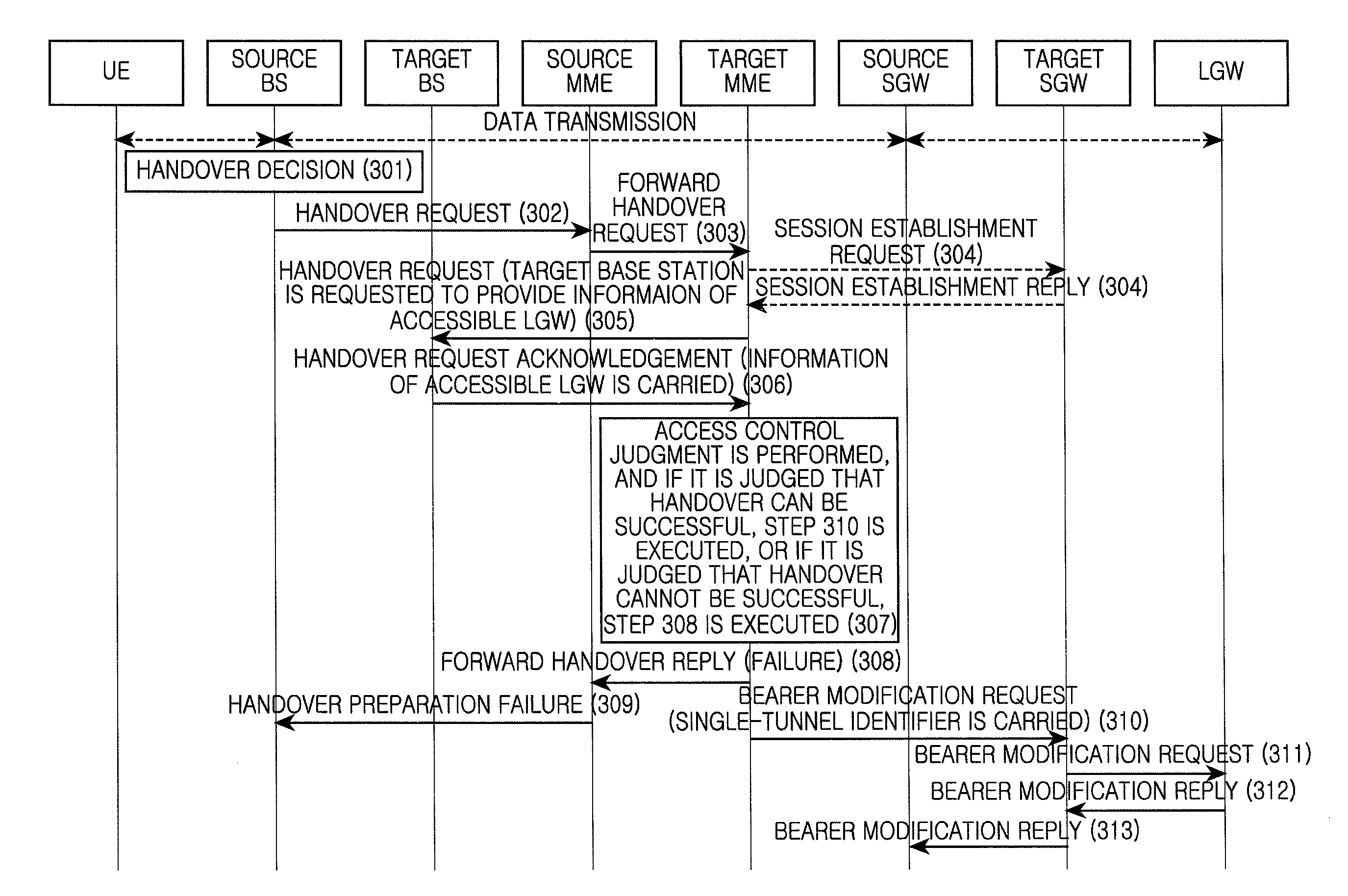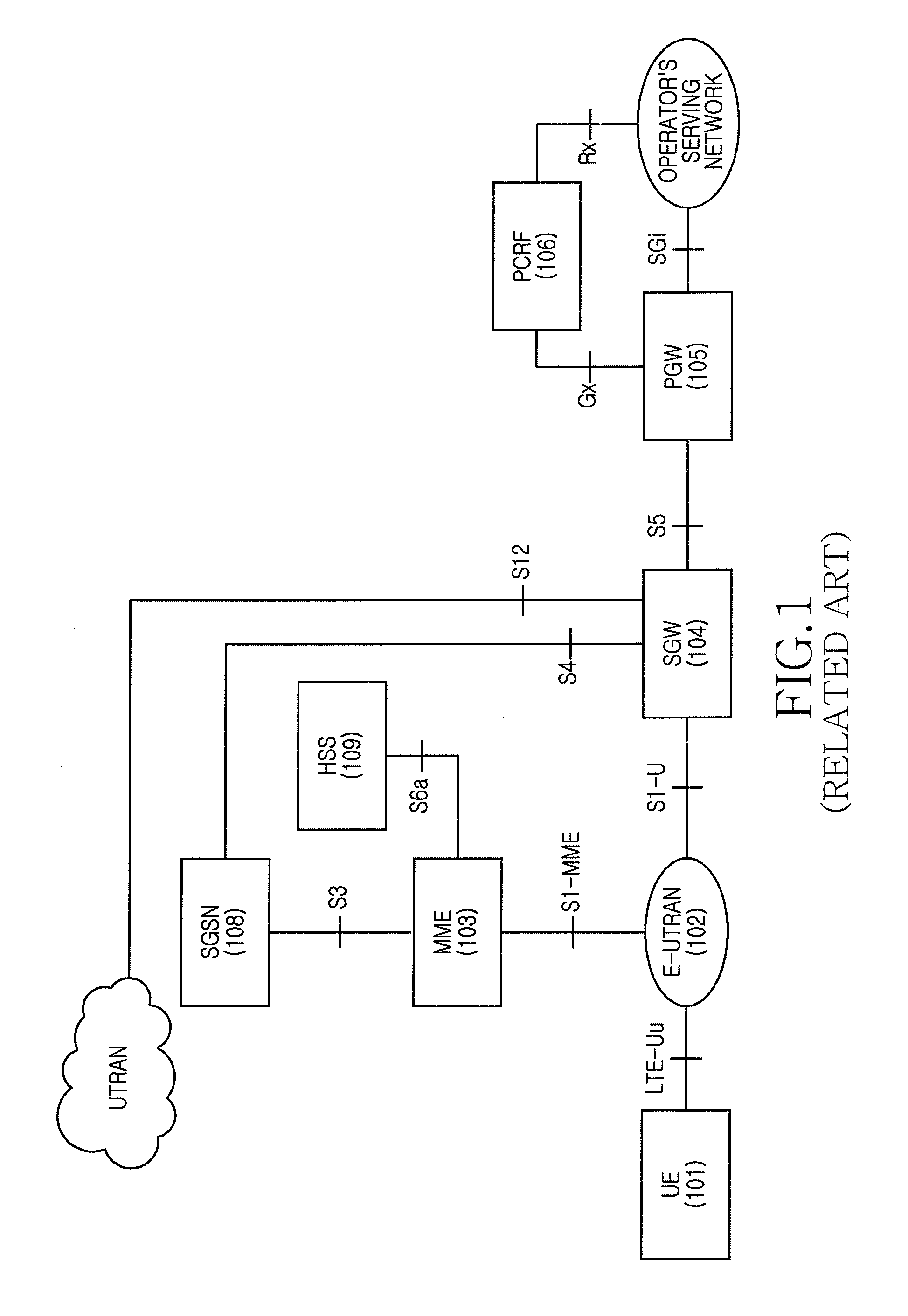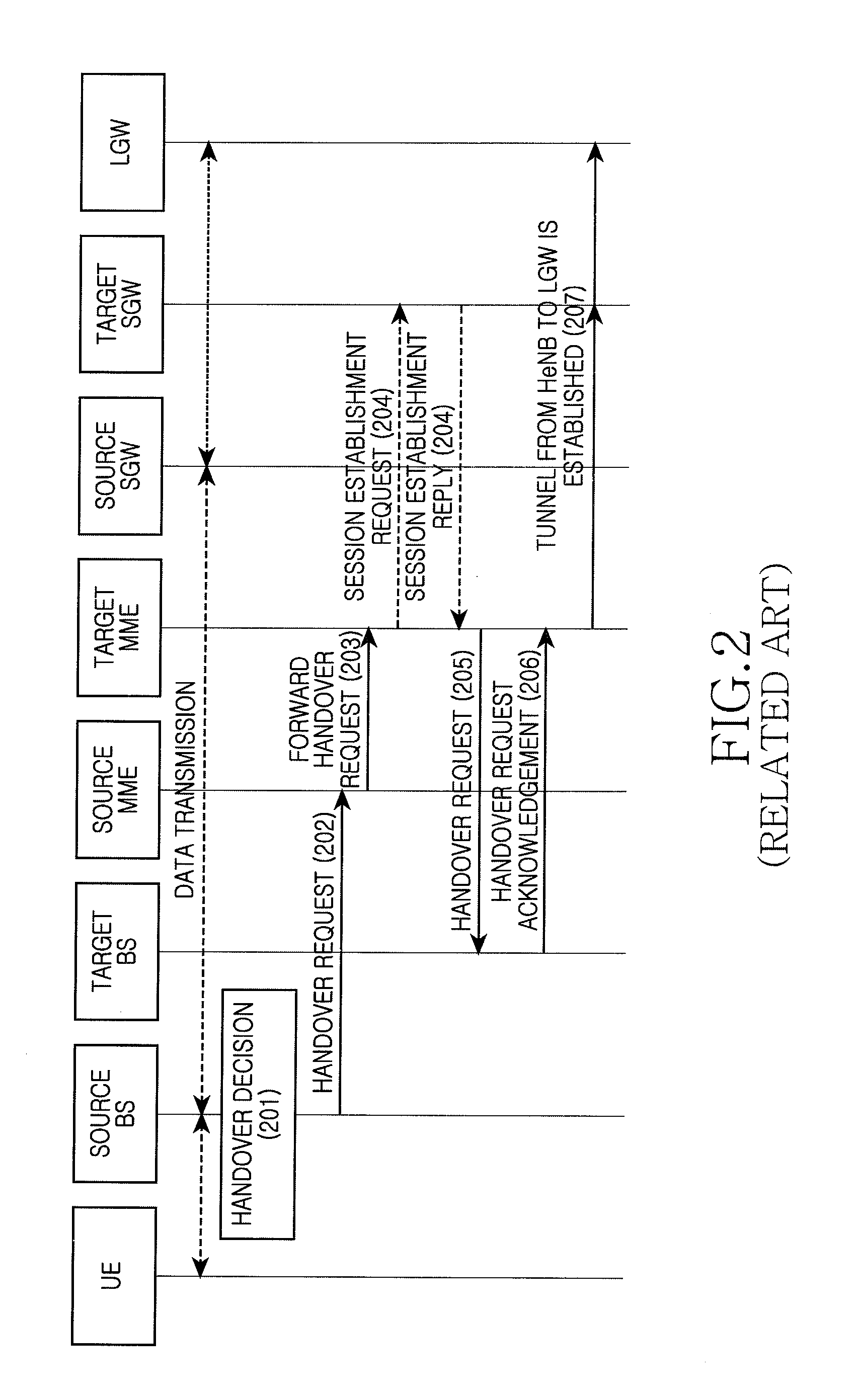Handover method supporting terminal mobility
a terminal and mobility technology, applied in the field of wireless communication technologies, can solve the problems of inability to ensure the success of handover, excessive signaling resources and wireless resources, and excessive handover, so as to reduce wasted signaling resources and wireless resources, and improve the quality of service
- Summary
- Abstract
- Description
- Claims
- Application Information
AI Technical Summary
Benefits of technology
Problems solved by technology
Method used
Image
Examples
first exemplary embodiment
[0063]FIG. 3 is a flowchart illustrating a method according to a first exemplary embodiment of the present invention. Referring to FIG. 3, the method can include the following steps.
[0064]At step 301, the source base station decides to perform the handover.
[0065]At step 302, the source base station sends a handover request to a source Mobile Management Entity (MME). In the handover request, target base station information, e.g., a target base station identification (ID) and target Tracking Area ID (TAI), is included, and information such as a target CSG or a handover type and the like can also be included.
[0066]At step 303, the source MME sends a forward handover request to a target MME. The target base station information, e.g., an evolved Node B (eNB) ID that can differentiate whether the target base station is a Home enhance Node B (HeNB) or a macro base station, is included in the forward handover request. In addition, the information such as the target TAI, target Closed Subscr...
second exemplary embodiment
[0092]FIG. 4 is a flowchart illustrating the method according to a second exemplary embodiment of the present invention. Referring to FIG. 4, the method can include the following steps.
[0093]Steps 401 to 404 are the same as steps 301 to 304 in the first exemplary embodiment, and a repeated description thereof is omitted herein.
[0094]At step 405, the target MME sends the handover request to the target base station. The information of the LGW currently accessed by the source base station is included in the handover request.
[0095]Specifically, the information of the LGW currently accessed by the source base station can be the identifier of the currently accessed LGW, the IP address of the LGW or the domain name information of the LGW, etc.
[0096]The target MME knows that the currently accessed UE supports the SIPTO or the LIPA according to the information in the received forward handover request message. The target MME decides also to establish the direct tunnel in the target system, an...
third exemplary embodiment
[0106]FIG. 5 is a flow chart illustrating the method according to a third exemplary embodiment of the present invention. Referring to FIG. 5, the method can include the following steps.
[0107]Steps 501 to 502 are the same as Steps 301 to 302 in the first embodiment, and a repeated description thereof is omitted herein.
[0108]At step 503, the source MME requests the target base station to provide the information of the LGW accessible to the target base station according to the target base station information in the handover request.
[0109]A new S1 interface Application Protocol (S1-AP) message is added to request the information of the LGW accessible to the target base station.
[0110]At step 504, the target base station replies to the source MME with the information of the LGW accessible to the target base station.
[0111]Likewise, a new S1-AP message can also be added in this step to request the information of the LGW accessible to the target base station.
[0112]Specifically, the informati...
PUM
 Login to View More
Login to View More Abstract
Description
Claims
Application Information
 Login to View More
Login to View More - R&D
- Intellectual Property
- Life Sciences
- Materials
- Tech Scout
- Unparalleled Data Quality
- Higher Quality Content
- 60% Fewer Hallucinations
Browse by: Latest US Patents, China's latest patents, Technical Efficacy Thesaurus, Application Domain, Technology Topic, Popular Technical Reports.
© 2025 PatSnap. All rights reserved.Legal|Privacy policy|Modern Slavery Act Transparency Statement|Sitemap|About US| Contact US: help@patsnap.com



